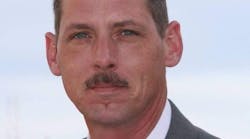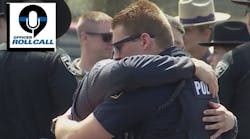The slaying in Southlake Town Square of a Mexican attorney with reputed ties to drug cartels was a brazen and well-coordinated assassination that illustrates the increasingly long and lethal reach of the brutal criminal organizations, security experts say.
The flamboyant public hit was unusual because Mexican cartels try to stay off the radar on this side of the border.
But it underlines an ominous trend: Dallas-Fort Worth has become a key "command and control" center for moving drugs and people across the country, top state and federal law enforcement officials confirm.
DFW is more than 400 miles from the Mexico border, but its central location and vast network of interstates and rail lines make it a vital distribution point for drugs.
"When you have these kinds of incidents in your nicer communities, it really resonates and brings home the cartels' reach," said Fred Burton, a security analyst with Austin-based Stratfor Global Intelligence who monitors the cartels, their areas of influence and their drug routes.
"There's a perception that these guys don't do that kind of stuff here, but in reality they do. They are selective, but if they do want to kill somebody, they've been successful in doing it, as evidenced by what happened in Southlake," he said.
The cartels' tentacles reach everywhere, Burton said.
"If you are in a large city in America, in all likelihood there is a cartel presence there. No city is untouched anymore," said Burton, a former counterterrorism agent with the State Department from 1985 to 1999.
Steven McCraw, director of the Texas Department of Public Safety, said Mexican cartels "constitute the greatest organized-crime threat" to the state.
Six of the eight major cartels operate in Texas: Los Zetas, the Gulf Cartel, the Sinaloa Cartel, the Beltran Leyva Organization, La Familia Michoacana and the Juarez Cartel, according to the Texas Public Safety Threat Overview released by the DPS in late March.
The Zetas, La Familia and Gulf cartels overlap in their operational areas, roughly the eastern half of Texas; the Beltran Leyva Organization is based along the Texas Gulf Coast; and the Juarez and Sinaloa cartels operate primarily in West Texas, according to the DPS.
In the last half-dozen years or so, the cartels have expanded beyond drug smuggling to become multifaceted organized-crime groups dealing in murder, extortion, kidnapping, human trafficking, oil theft, money laundering, auto theft, weapons smuggling and corruption, McCraw said.
"They've evolved. They've adapted military tactics to engage each other and the Mexican government. They've adopted terrorist tactics that we've never seen before in organized crime. There have never been organized-crime groups that have been this depraved," he said.
'Franchise model'
Cartels have also broadened their "partnerships" with the growing number of Texas gangs, McCraw said. The DPS estimates that the Lone Star State has more than 100,000 gang members.
That "local franchise model" provides a robust ask-no-questions labor pool for everything from surveillance and drug transportation to weapons smuggling and murder, Burton said.
"These prison gangs are a real problem in Texas. In essence, they are subcontractors," Burton said.
George Leal, an assistant U.S. attorney for the Northern District of Texas, said cartels are highly adaptive enterprises with one goal: making money.
"I think what people may not realize is that these are intelligent folks and they are in it to make a profit. They know how to manage things and manage their money. They are very resourceful," he said.
"It's a moneymaking business. They don't care who they hurt. They don't care if somebody is going to be killed by these drugs. They just want to make money."
The cash and drug statistics are staggering.
Estimates on the money that travels from the U.S. to Mexico from the drug trade range from $19 billion to $29 billion annually, according to the DPS.
From April 2006 to March 2013, 9.28 million pounds of drugs with a street value of $8.03 billion were seized in Texas.
Since 2006, Operation Border Star, Gov. Rick Perry's border security operation, has seized more than $182 million in currency, according to the DPS.
As of May 31, 392 cartel members had been arrested in Texas since 2007, said DPS spokesman Tom Vinger, who notes that most crimes committed by cartels and statewide gangs go unreported.
Not counting the fatal shooting of 43-year-old Juan Jesus Guerrero Chapa in Southlake on May 22, there have been 33 cartel-related homicides in Texas since 2009, Vinger said.
Logistical hub
The cartels are drawn to Dallas-Fort Worth by the same logistical infrastructure that attracts legitimate businesses -- a central location and a spider web of interstates and rail lines that extend in every direction, cartel watchers say.
That "criminal supply chain" -- centered on the Interstate 35 corridor, which starts in Laredo, the nation's largest inland port of entry, and branches off into the I-10, I-20 and I-40 networks -- transports the predominant amount of drugs that flow through the United States, Burton said.
"That's why the cities in Texas are critical to the drug cartels. If you can get the dope to Dallas-Fort Worth, you're pretty much home-free because from there you can scatter in all directions," he said.
Another aspect of the supply chain is the extensive rail network in DFW, he said.
"Rail is how a lot of dope is moved across the country because you don't have the high degree of scrutiny. That kind of supply chain work is what these guys do. They are brilliant when it comes to distribution," Burton said.
Daniel Salter, acting special agent in charge of the Dallas field division of the Drug Enforcement Administration, said that since 2007, the Metroplex has morphed from a transportation hub into a distribution center with embedded cartel operatives managing operations.
"The reason we've shifted to what we call command-and-control elements is that we have drug cartels coming from San Antonio and Houston who come to Dallas to pick up their drugs. In the past, that was unheard of," he said.
"They are bypassing cities closer to the borders. Our guys in Dallas are communicating directly with the interior of Mexico," Salter said.
"These are very unassuming groups. They move in with their wives and kids and fit into our communities. They don't buy the biggest houses on the block or have the fanciest cars. They're smart. They know what draws attention.
"Proximity to the border is one reason they are here. But most of these organizations have families and relatives in this area, and that's who they trust," Salter said.
A case in point is Miguel Trevino Morales, a leader of the hyperviolent Zetas.
"He's from the Dallas-Fort Worth area. He has family here," Salter said.
Last month, his brother, Jose Trevino Morales, was convicted by an Austin jury for laundering at least $60 million in drug money through quarter horse sales in the U.S.
Skipping the border
The cartels are no longer focused just on moving drugs across the border. They are concentrating on controlling drug networks in American cities, experts say.
La Familia was an early adapter. It skipped the volatile border area and set up operations in DFW, McCraw and Salter said.
It was involved primarily in methamphetamine distribution before it was hit hard by law enforcement, Salter said.
But in its place emerged a new cartel, the Knights Templar, a "poly-drug group who sell anything they can make money on," he said.
The U.S. attorney's office in North Texas has prosecuted 160 members of La Familia, Leal said.
"We're working to keep the cartels at bay and fight them off. We are getting to them. We'll find them and when we have the evidence to prove the crime, we will put them away," he said.
The cartels "absolutely fear" U.S. prosecution, Salter said.
"They would rather live in Mexico and hide from their enemies and get killed than come to the U.S. and face prosecution," he said.
Nimble operators
Another local example of the cagey cartels' fluid approach to the drug business is the large marijuana "grows" that have been found in recent years, one near the DEA's Dallas office and others on the periphery of the Metroplex in off-the-beaten-path areas of Ellis and Navarro counties.
From 2007 to 2009, the Navarro County Sheriff's Department eradicated more than 40,000 plants tended by cartel farmers.
"They are incredibly nimble. They operate like a multinational corporation that always has to shift and relook at their business models," Burton said. "They do their homework. They adjust their business models based on geography."
The same things are happening in Oklahoma, where three giant marijuana farms linked to cartels -- one with 8,900 plants -- were found last year, said Mark Woodward, spokesman for the Oklahoma Bureau of Narcotics and Dangerous Drugs.
In Mexico, 60,000 deaths have been attributed to drug violence, and McCraw said cartels are increasingly pushing back at Texas law enforcement with military tactics.
"If you have pursuits, they no longer stop and bail out. They make every effort to get back to the river. They are using tire spikes and blocking vehicles," he said, noting that shots have been fired from Mexico at 85 officers in Texas.
"Our concern is not what could happen -- it's what's already happening."
Copyright 2013 - Fort Worth Star-Telegram
McClatchy-Tribune News Service


